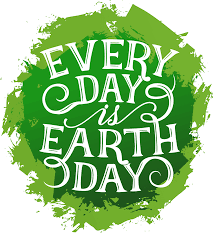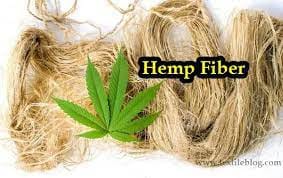This year, why not celebrate Earth Day with CBD topicals? Why is that you ask? Because if we are going to slow climate change, everyone needs to be involved, not just big business and polluters. Climate change is not new. We knew about it as early as 1938 and have done little to stop it. The longer we wait to make significant change, the worse it looks for Mother Earth.
Let me explain why to celebrate Earth Day with CBD topicals. April 22, 1970. The first Earth Day. Senator Gaylord Nelson, its founding father.
Rampant pollution
Throughout the 1960s, factories and industries recklessly spewed pollution into the air and water without repercussions. Nelson decided to change that by raising public awareness of the dirty air and water plaguing our country. Taking note of the success of antiwar teach-ins that galvanized young people to oppose the Vietnam War, he decided to use that model to hold a national teach-in for the environment. In 1969, he invited Americans to get climate and pollution issues out in the open and on a political agenda. As a result, on December 2, 1970, the Environmental Protection Agency became a national fixture. Earth Day has continued for more than 50 years.
Nelson decided to change that by raising public awareness of the dirty air and water plaguing our country. Taking note of the success of antiwar teach-ins that galvanized young people to oppose the Vietnam War, he decided to use that model to hold a national teach-in for the environment. In 1969, he invited Americans to get climate and pollution issues out in the open and on a political agenda. As a result, on December 2, 1970, the Environmental Protection Agency became a national fixture. Earth Day has continued for more than 50 years.
So what does all that information have to do with celebrating Earth Day with CBD topicals? Hemp, actually. Hemp was once widely grown in America. Heck, it was used all over the world, dating back to the Neolithic Age in China. And then came reefer madness.
Two factors converged to discredit hemp. The story goes that William Randolph Hearst, the newspaper giant, set about defaming the prolific plant to make way for trees to provide paper for his newspaper empire. Money talks.
Around the same time, according to Martin A. Lee in his book Smoke Signals, Harry Jacob Anslinger became the director of the new Federal Bureau of Narcotics (FBN) in Washington, D.C. Money was tight. Anslinger needed a cause to save the failing FBN. He hit upon an idea. Mexicans bringing in weed, smoking it and “becoming raging rapists, ax murderers, criminals, etc.” became the hue and cry.
So between the FBN and Hearst, reefer madness was widely touted by yellow journalists. They tarred hemp with the same brush as marijuana although they’re merely cousins. The government banished hemp from United States agriculture by 1958.
Heroic hemp
As it receded from our agriculture, so did the knowledge of its benefits. As a source of food, it’s prolific and can survive without chemical pesticides mucking up the environment. (Did you know it even kills the weeds that try to grow around it?) From this food source comes hefty amounts of heart healthful Omega-3 and -6. Use hemp seeds to make butter, jazz up a salad with nutrition and flavor and much more. If you’ve read any of these blogs, you’ve learned about many health benefits derived from hemp, our source of CBD.
Losing hemp’s industrial potential has been an economic shame. According to an article in Forbes, hemp could be a boon for the economy and the environment. It’s versatile and can be used to produce textiles, paper, biofuel and more. In fact, the fiber is stronger and softer than cotton and lasts longer. It uses less water and grows almost anywhere. Fiberboard, lighter and stronger than wood, is another byproduct of hemp. Plus, trees take years to grow. Hemp not so much. So, sustainability is not a problem. We’re missing out on a boatload of products that could be produced from this one plant more ecologically and economically.
 Hemp could be an instrumental tool in slowing climate change. Research suggests hemp is twice as effective as trees at absorbing and locking up carbon. One hectare (2.5 acres) of hemp can absorb 8 to 22 tonnes of CO2 a year. That’s more than any woodland. The CO2 permanently affixes to the hemp fibers. These fibers can be used to develop products that I noted above, textiles, medicines, insulation for buildings and concrete. BMW is even using it to replace plastics in various car parts. Henry Ford used hemp in his cars in 1941.
Hemp could be an instrumental tool in slowing climate change. Research suggests hemp is twice as effective as trees at absorbing and locking up carbon. One hectare (2.5 acres) of hemp can absorb 8 to 22 tonnes of CO2 a year. That’s more than any woodland. The CO2 permanently affixes to the hemp fibers. These fibers can be used to develop products that I noted above, textiles, medicines, insulation for buildings and concrete. BMW is even using it to replace plastics in various car parts. Henry Ford used hemp in his cars in 1941.
Mother Earth needs CBD topicals
Lost Remedy cares for Mother Earth (Mother Nature). We source organically grown hemp, without using harmful herbicides, pesticides or growth enhancers. We also choose products derived from CO2 extraction. It is the most expensive extraction method, but by far the safest.
The FDA doesn’t regulate many of the commercial beauty and skin products we use. As a result, they are a toxic soup with which we unknowingly pollute our planet. Our cosmetics alone pollute our air as much as automobile emissions. The culprit? Scent. These emissions interact with particles in the air to produce harmful ozone and pollution known as PM2.5, which is very bad for our lungs.
But the key ingredient in cosmetics, palm oil, is also killing off forests and wildlife. Palm oil itself isn’t bad. But humans raze forests to make room for unsustainably grown palm oil plantations. Destroying the natural forests removes animals’ habitat, and they have nowhere to go.
The chemicals in cosmetics eventually get washed off and end up in our water. Lotions, sunscreen, creams and shampoos often contain parabens and triclosan. Both are identified as endocrine disrupters, which can lead to cancer. In addition, because of these toxins, coral reefs, called one of the most valuable ecosystems on Earth, are dying.
As I noted at the beginning of this blog, we all need to do our share to slow climate change. Using earth-friendly health and beauty products is one of many ways individuals can make a difference. We make our topicals with CBD, carrier and essential oils. All derived from nature and when washed off, don’t add chemicals and toxins to our water or air.
This Earth Day, honor your Mother Earth by choosing CBD topicals that are free of chemicals and toxins.
